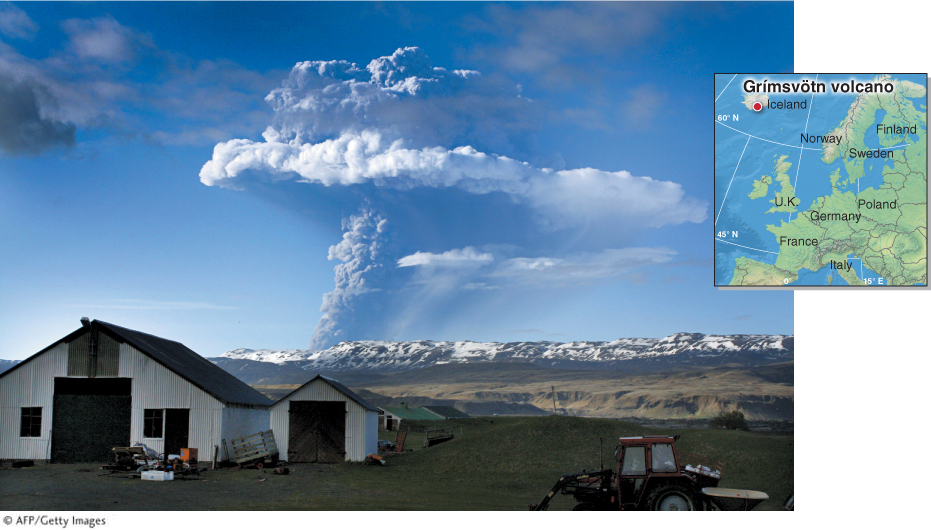DRIFTING CONTINENTS: Plate Tectonics
12

LIVING PHYSICAL GEOGRAPHY
Why do the coastlines of Africa and South America fit together?
How can whole continents move?
Is it true that Los Angeles will someday be connected to San Francisco?
How do mountains form?
THE BIG PICTURE
The movements of lithospheric plates create mountains, ocean basins, and many other physical features of Earth. The Tibetan Plateau and its surrounding mountains provide food security.
LEARNING GOALS
After reading this chapter, you will be able to:
12.1
Compare the theory of continental drift with the theory of plate tectonics.
12.2
Describe the evidence used to develop the theory of plate tectonics and explain how lithospheric plates move.
12.3
Describe the three types of plate boundaries and the landforms resulting from each plate boundary type.
12.4
Describe landforms that result from tectonic processes away from plate boundaries.
12.5
Assess the relationship between food security in South Asia and the changing climate of the Tibetan Plateau.
THE HUMAN SPHERE:
Life on Earth’s Shifting Crust
FOR BETTER OR FOR WORSE, HUMANS ARE AFFECTED by the movements of Earth’s lithospheric plates. For instance, earthquakes, which are a result of plate movement, range from minor annoyances to major disasters. Large earthquakes can reduce cities to rubble and generate enormous ocean waves, called tsunamis, that destroy coastal areas (see The Human Sphere in Chapter 14).
Moving plates also create volcanoes, which can be just as disruptive to the lives of people. In April and May of 2010, the eruption of Eyjafjallajökull volcano in Iceland caused the cancellation of some 100,000 airline flights. The next year, in 2011, Grímsvötn, another Icelandic volcano (Figure 12.1), grounded thousands more flights.

The movements of Earth’s lithospheric plates are also beneficial to people. Ash from erupting volcanoes, for example, settles to the ground and creates some of the world’s most fertile agricultural soils, called andisols (see Section 9.1). The moving plates also build the land on which we live. The land surface of many island nations, such as Japan, Indonesia, and much of New Zealand, was built by volcanoes. Plate movements even modify the chemistry of the atmosphere and its greenhouse effect by moving carbon from the atmosphere to the lithosphere and back again over millions of years (see Section 11.4).
This chapter explores Earth’s dynamic lithosphere, first in the context of continental drift theory, then in the modern framework of plate tectonics theory. Next, it describes interactions between plates and the resulting topography. Finally, it explores the Tibetan Plateau’s affect on climate and people.